
views
Fulfilling Education Requirements

Take high school classes in science and communication. Take the most advanced chemistry and biology courses offered in your high school, as well as courses in composition and oral communications. Maintaining a high GPA and participating in extracurricular activities can help you get into a good college.
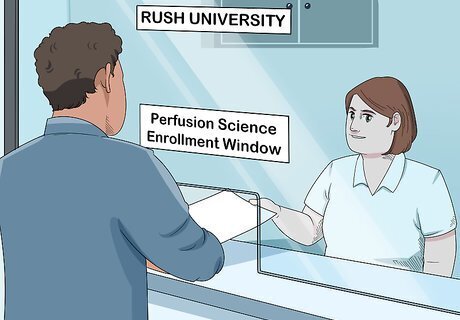
Attend a school that offers an undergrad degree in perfusion. There are only 4 schools in the US that offer perfusion science programs. You must enroll in one of these schools as a science major, and complete 60 semester hours of college coursework. After 2 years of exemplary science coursework, you can apply for the perfusion science specialization. The 4 schools with undergraduate perfusion science programs are: Rush University University of Pittsburgh SUNY Upstate Medical University The Medical University of South Carolina
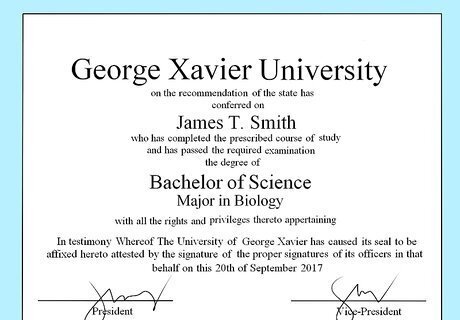
Earn an undergrad degree in a related field if you cannot get a degree in perfusion. A bachelor’s degree in biology, chemistry, anatomy, physiology, math, or pre-med, plus a master's degree or graduate certificate, can qualify you for a career in perfusion. Some reasons you might choose a degree in a related field include: Wanting to attend a particular college or university that does offer perfusion science. Not being accepted into a perfusion science undergrad program. Not being able to afford the cost of a perfusion science undergrad program. Not being geographically close enough to a perfusion science undergrad program.
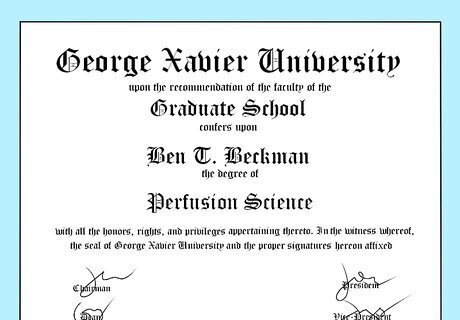
Complete a perfusion certificate or Master’s program. If you have received your bachelor's degree in a related field, you will need to complete either a 2-year perfusion certificate program or a Master’s in Science perfusion program (2-3 years). A Master’s programs will be more in-depth, and will likely involve a capstone research project. This may look better to some employers. A certificate program can be done in less time and for less money than a Master's. Most certificate programs will not involve a research project. Find a program that has been accredited by the Accreditation Committee for Perfusion Education. Begin the application process during the fall of your senior year of college, or 1 year prior to when you hope to begin. The Perfusion Program Director’s Council currently lists 16 Master’s/certificate programs in the United States and Canada.

Seek out internships and volunteer opportunities in the medical field. Any kind of experience you can get in a hospital or medical setting can help make you more comfortable, and will look great on your resume. Look for these opportunities while you are still in school. Ask your professors for suggestions. Consider joining professional associations to gain access to their job boards. Inquire at local hospitals and medical centers.
Becoming Certified
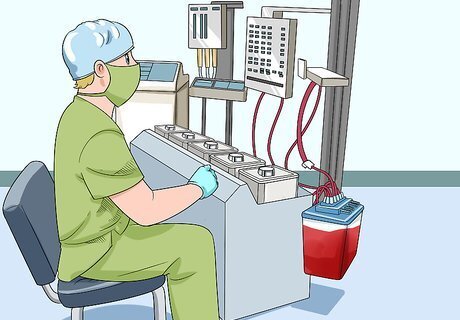
Perform 75 perfusion procedures during clinical training. As a part of your degree and/or certificate program, you will perform hands-on perfusion procedures. First, you will shadow a working perfusionist, then you will perform procedures under supervision. Clinical training is a required part of the degree/certificate process. The completion of at least 75 procedures is required by the American Board of Cardiovascular Perfusion (ABCP) in order to become certified.

Pass the written Perfusion Basic Science Exam. To become a Certified Clinical Perfusionist (CCP), you must pass a two-part exam administered by the ABCP. The Perfusion Basic Science Exam is the first part. This written test includes math and science-based questions. To qualify for this exam, you must have graduated from (or be enrolled in) a perfusion education program, and must have completed the 75 clinical perfusion procedures.
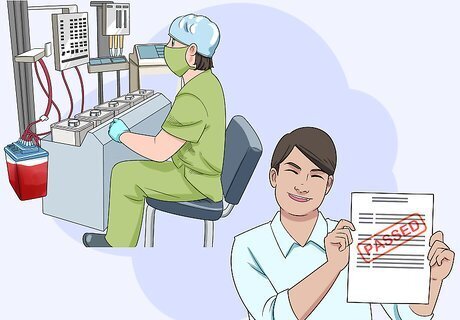
Pass the hands-on Clinical Applications in Perfusion Exam. The Clinical Applications in Perfusion Exam is the second part of the ABCP exam. To qualify for this exam, you will need to complete 50 additional perfusion procedures after graduating from school. This exam will include a mix of written exam questions and hands-on procedures to demonstrate your competence. Hospitals will often employ perfusionists who have only completed the first part of the exam on a provisional basis. You may be able to take the second part of the exam after you gain employment.
Finding a Job as a Perfusionist

Perform daily searches through large job websites. Make a point of searching job websites—such as Monster, CareerBuilder, Indeed, SimplyHired and Craigslist—every day to see new job listings. On several on these jobs sites, you can set up an email alert to be sent to you anytime a perfusionist job becomes available.

Check your local paper’s classified ads for jobs. Especially if you’d like to stay in your area, your local paper is an excellent resource. Local hospitals and healthcare centers will take out ads. Check your Sunday paper weekly.

Contact local hospitals and healthcare providers directly. Visit the website for any hospitals in your region and look for their employment listings. You might also contact someone in the Human Resources department, and inquire about job openings.
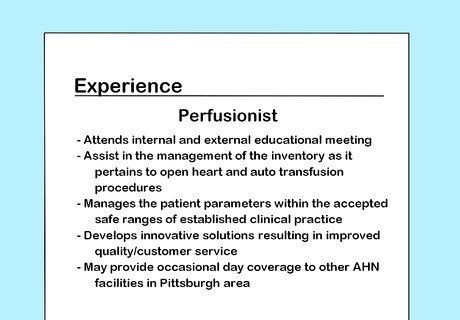
Prepare a resume that highlights your qualifications and experience. Your education, board certification, and experience working in a medical setting are what can bring your resume to the top of the stack. List these at the top of your resume. Here are some other items to include: Any training and experience in interpersonal communication. Internships or volunteer work in the medical field. Specific coursework and other training you completed, including GPA. Any awards or other honors relevant to medicine.

Network with people in the medical field. Look for people who are successful medical professionals and make connections with them. Reach out to people you already know (such as professors or internship supervisors) and see if they know any perfusionists you can speak to. Connect with perfusionists using online channels, such as LinkedIn. When you do get the chance to speak with a working perfusionist, be prepared to introduce yourself and have a couple of questions ready.


















Comments
0 comment